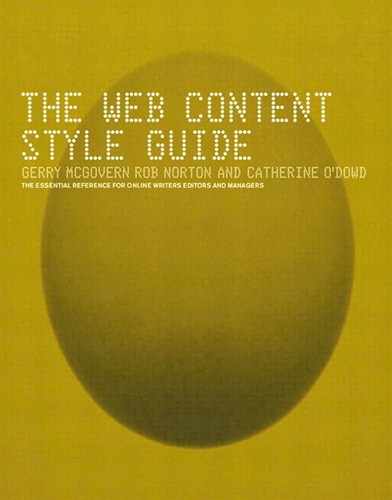Introduction
Good writing is the exception rather than the rule on the Web. One reason is simply that it’s hard to write well. Another is that many of the people who’ve been involved with the Web from the beginning have been slow to realize that writing is a very big part of what the online experience is about. While the Web has important non-textual uses, such as listening to audio files, watching video files, and downloading software and music, most people who use it spend an overwhelming amount of their online time reading words on a page. It’s not an accident that we call them webpages. Nor is it an accident that the language used to create webpages is called Hypertext Markup Language (HTML).
Following on from this logic, we call the person who comes to a website a reader. That doesn’t mean they can’t do other things on a website, such as purchase a product, download software, or listen to audio. It merely recognizes that the primary activity for the vast majority of people when they access the Web is reading. We also call a website a publication because, when you think about it, that’s what a website is. A website publishes content targeted at a group of readers. “Reader” is a much warmer and more explanatory word than the generic “user.” (Two things websites and illegal drugs have in common: they share the words “user” and “traffic.”)
Writing, in fact, is arguably the most important link in the chain of devices, technologies, software, and interfaces that propels ideas across the Web—more important than the kinds of computer, operating system, browser software, or Internet connection method used. Writing is also the least understood link in that chain, and the one least likely to improve with technology.
Because the Web is accessed through a computer, many organizations assume it is something technical. What they fail to realize is that the Web is in fact a publishing medium, just like print. These organizations have put in place the technical infrastructure to publish webpages, but have rarely bothered to create the kind of editorial infrastructure that a publisher must have. One reason for this is that the people in charge of websites—webmasters, chief technology officers, chief information officers—tend to have quantitative backgrounds; they're more familiar with HTML and programming than with grammar and composition.
In addition to quality content, the design of websites must facilitate finding and reading that content. Web design is about laying out content so that it can be easily read. It’s about organizing content so that it can be easily navigated and searched. For the vast majority of websites, design should not be about elaborate graphics and visual effects. The number-one design principle for the Web is simplicity. Quality web design should be all about making life easier for the reader to find content, and then making it easy for them to read that content.
As quality content becomes ever more critical in differentiating successful websites from others, the need for quality control will grow. Two things that the Web needs in general—and which every website needs in particular— are standards and rules.
While there will never be the kind of hard and fast rules about web publishing that there are about, say, web software, general standards are in fact emerging. The number of websites that are badly written, badly edited, and badly designed remains vast, but if you look at the successful, high-volume websites, you see professional editing and standard design.
